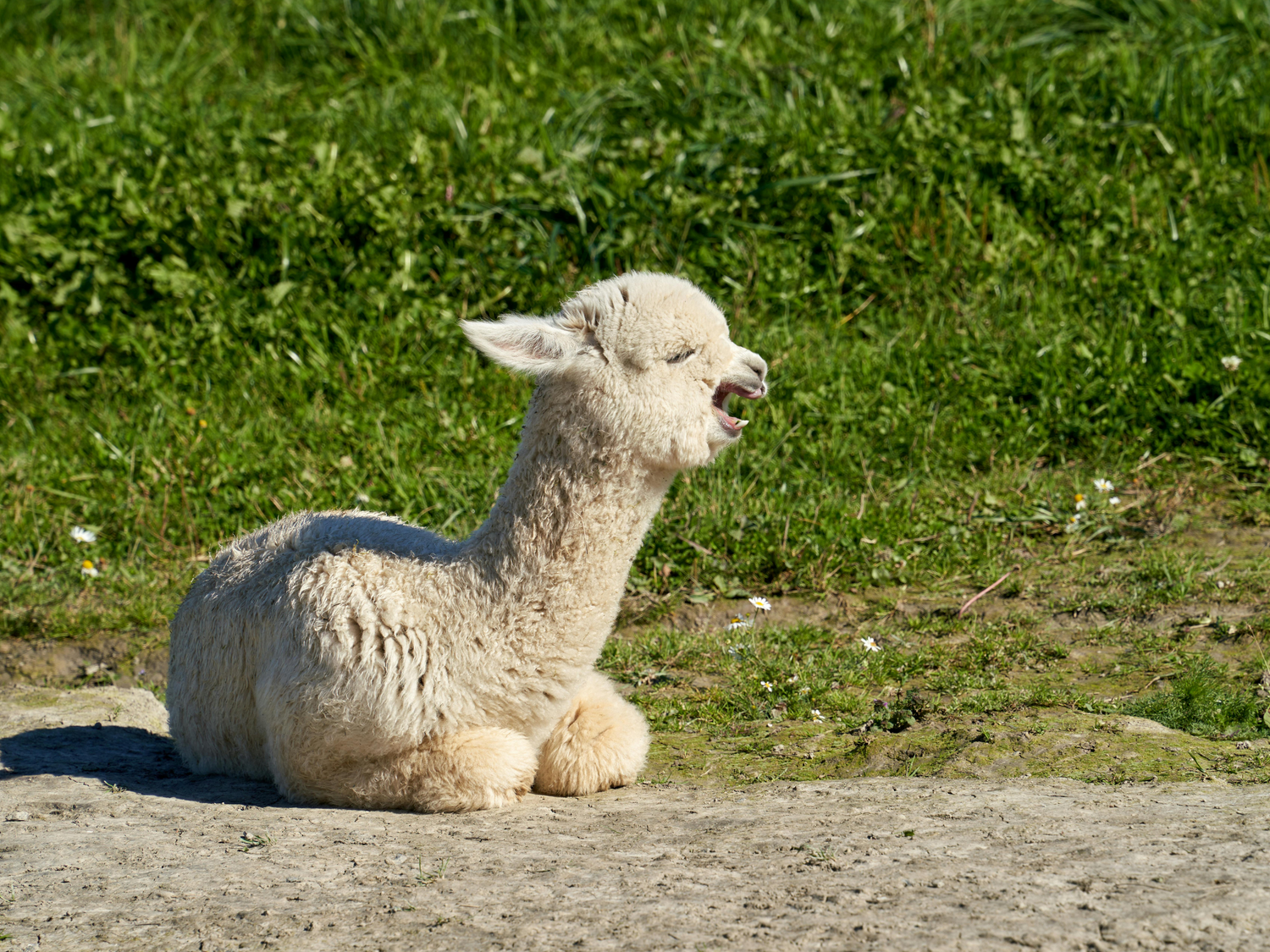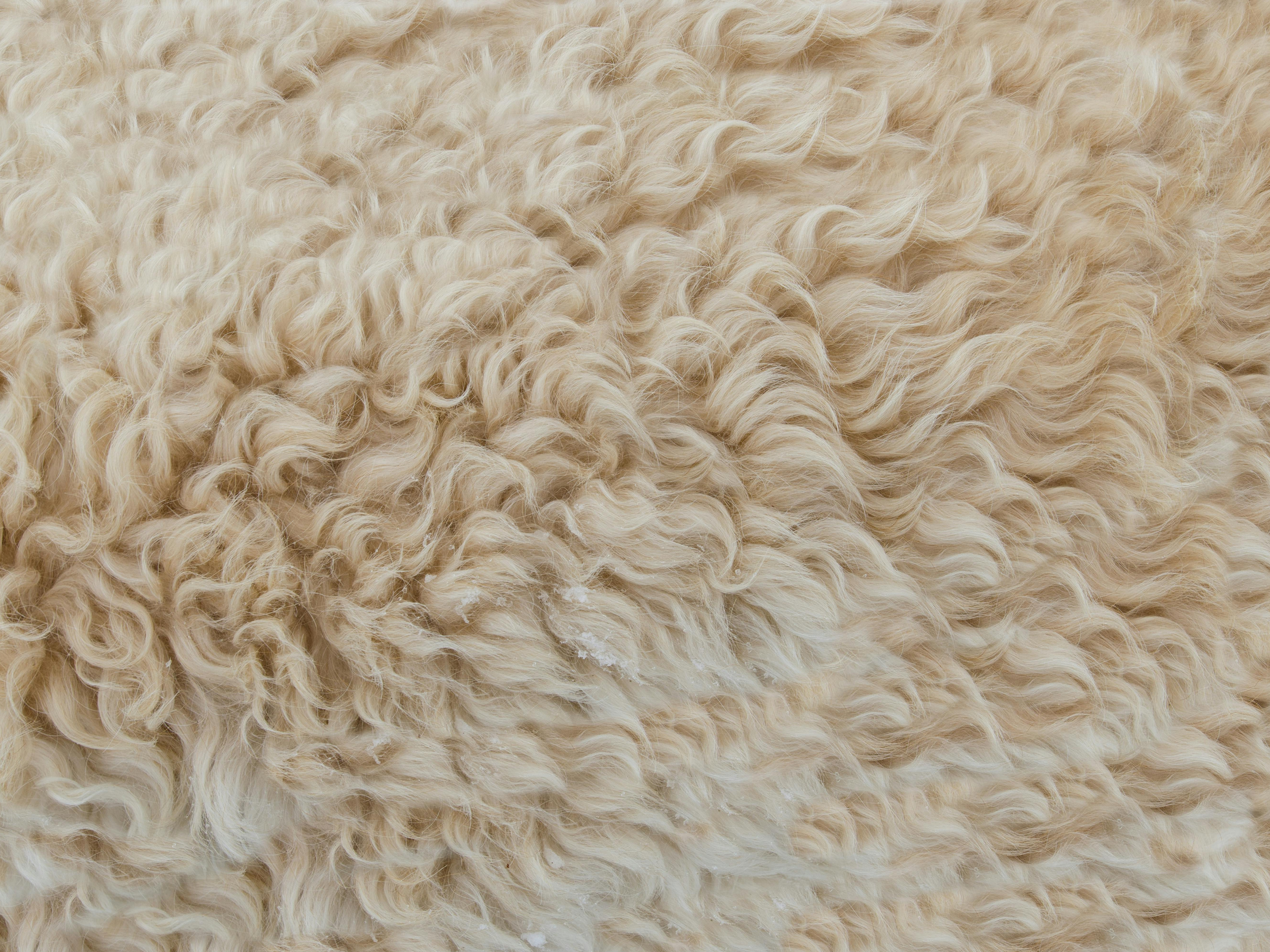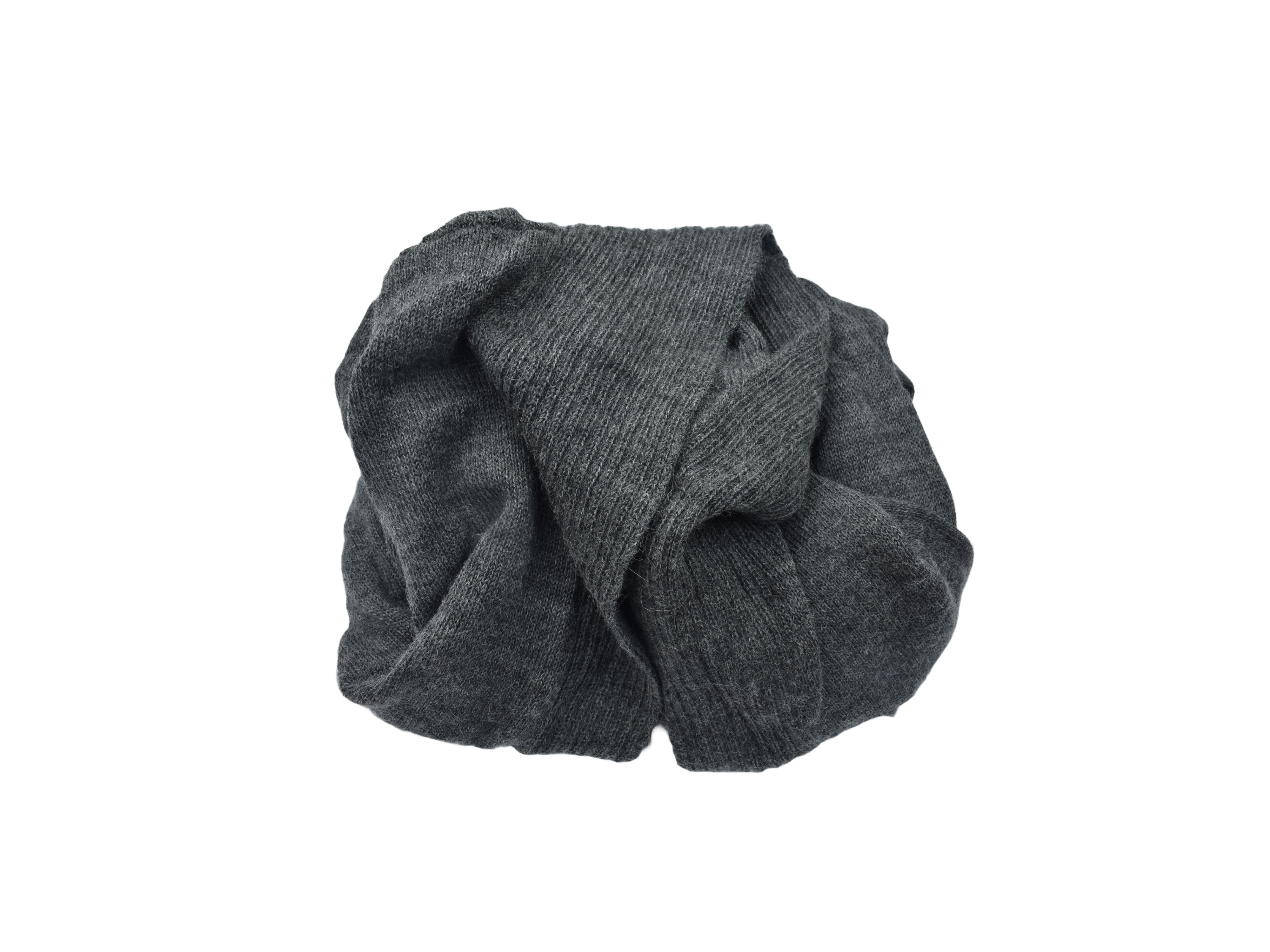Baby alpaca wool is a particularly fine and luxurious natural fiber obtained from alpacas, a species of camel native to the Andes. The name can be somewhat misleading, as baby alpaca wool doesn't necessarily come from young alpacas, but rather refers to the fineness and quality of the fiber (yes, the image in the blog post is also misleading). Here are the key characteristics:
1. Origin
- It is obtained from the first shearing or from the finest hair of the alpacas, often from the neck or belly area.
- The fibers have a diameter of about 19–22 micrometers, which makes them particularly soft and supple.
2. Properties
- Softness: Similar to cashmere, but less prone to pilling.
- Warmth: Baby alpaca wool is extremely insulating, up to seven times warmer than sheep's wool.
- Breathability: Regulates temperature well and ensures comfortable wear.
- Hypoallergenic: Unlike sheep's wool, it does not contain lanolin, making it ideal for people with sensitive skin.
- Lightweight: Despite its warmth, it is as light as a feather.
- Robustness: Baby alpaca wool is durable and less prone to tearing or deforming.
3. Use
- It is used for high-quality garments such as sweaters, scarves, hats, blankets and gloves.
- Due to its luxurious nature, it is often used for premium fashion or handmade products.
4. Care
- Washing: Best by hand with cold water and mild wool detergent.
- Drying: Lay flat and protect from direct sunlight.
- Storage: Store in a dry place, ideally in an airtight container to prevent moth infestation.
Difference to normal alpaca wool
- Normal alpaca wool is coarser (23–30 micrometers) and less soft.
- Baby alpaca wool offers greater comfort and is ideal for sensitive skin.
Bottom line: Baby alpaca wool is an exclusive, sustainable, and versatile fiber, particularly suitable for high-quality and comfortable garments. It combines luxury with functionality and is a great choice for environmentally conscious consumers.
Cheers,
Henrik
















